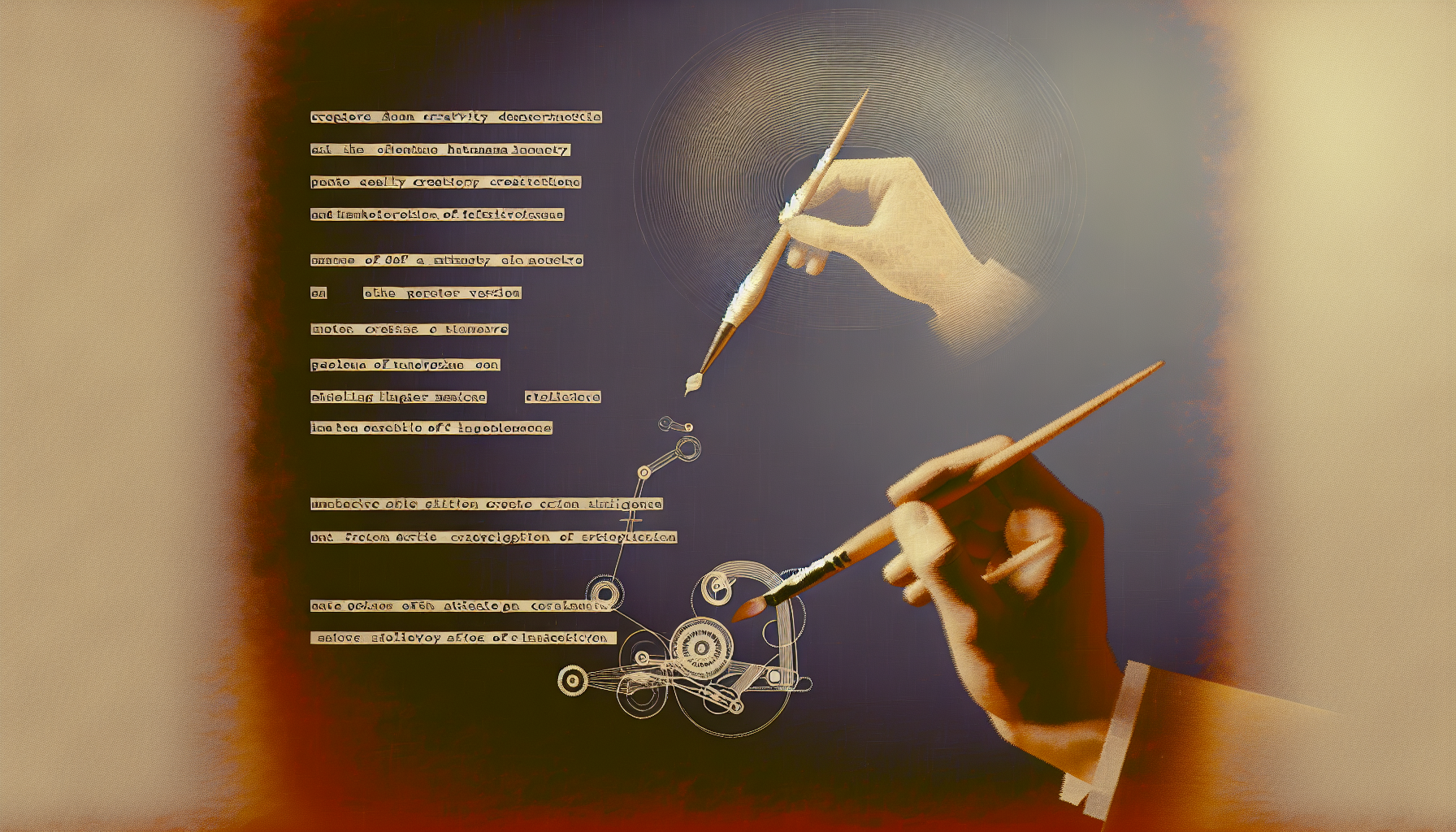In the symphony of human ingenuity, creativity has always been a defining crescendo. It is the stroke of a painter’s brush, the cadence in a poet’s verse, the innovation of an engineer, and the lifeline of a philosopher’s introspection. As artificial intelligence (AI) advances at an unprecedented pace, it compels us to ask: Is AI a partner in the evolution of human creativity, or is it a would-be replacement? This is not just a question for technology enthusiasts or ethicists; it is a question for everyone who marvels at the tapestry of human experience.
The Creative Paradox: Partnership or Outmoded Practice?
Artificial intelligence, particularly in the realms of language and art, has taken a seat at humanity’s creative table. AI-generated art and literature, through platforms like DALL-E and GPT-3, challenge our perceptions of what it means to be creative. Yet, when pondering AI as a partner or a replacement, we face a paradox. On one side, AI augments our ability to create, providing tools that transform ideas into reality with a few keystrokes. On the other, it tempts us with the possibility that machines could supplant the human touch entirely.
If you want to write a novel set in a steampunk dystopia with a ferret bartender, AI can help you generate plot ideas, suggest dialogue, or even compose entire chapters. Does this make the author obsolete, or does it enable the writer to reach new creative heights? Perhaps AI is like a hyper-intelligent ferret behind the bar—helpful and resourceful, but unlikely to replace the charm and nuance of the human writer.
Creativity in Code: The Rise of AI-Generated Art
Consider AI-generated artwork. These digital canvases can astonish us with their complexity and emotional depth. Critics argue, though, that machine-created art lacks the intent and emotion inherent in human artistry. After all, the masterpieces of Van Gogh or Da Vinci weren’t just colors on a canvas; they were embodiments of their creators’ visions, beliefs, and profound inner world.
So, does AI possess creativity, or is it simply on a sophisticated scavenger hunt through its algorithms? This raises another tantalizing question: Can a machine, devoid of consciousness and empathy, produce art? One might argue, with a wink, that not every human artist reminds one of consciousness and empathy either—but that’s beside the point. The real intrigue is in the collaboration, the dance where machine intelligence and human genius meet.
The Societal Impact: Creative Democracies or Monopolies?
AI has democratized creativity, lowering barriers for those previously excluded. With AI tools, a novice musician can compose a symphony, an amateur filmmaker can produce a blockbuster-quality short film, and a non-artist can design eye-catching graphics. This makes creativity accessible, a golden age where anyone with imagination and internet access can become a creator.
But here’s a curveball: could this democratization lead to creative monopolies? Major tech companies, holding the keys to powerful AI, could dictate the direction of creative ventures. The line between expanding creative opportunities and stifling diversity could blur. As we navigate this landscape, it’s essential to ensure that our understanding of creativity embraces diversity, fostering environments where both human and machine-generated creativity can flourish.
Education and Evolution: Redefining Human Potential
The evolution of AI in creativity doesn’t spell the end of human ingenuity, but rather challenges us to stretch beyond traditional paradigms. What if, instead of fearing replacement, we integrated AI into education to cultivate a richer tapestry of creativity? Imagine AI tools in classrooms, guiding students in exploring their creativity without the constraints of technical skills. Lessons would focus less on rote learning and more on innovation and critical thinking.
In essence, AI can act as our creative muse, propelling us to explore uncharted territories of imagination. This partnership redefines not just creativity but the very essence of human potential. The rise of AI might be the nudge humanity needs to transition from passive recipients of information to active, adaptable start-makers.
A Humble Conclusion: Embracing the Tension
As we ponder whether AI is a partner or a threat to human creativity, it’s wise to embrace the tension. AI offers possibilities we’ve barely begun to explore. The journey lies in understanding it not as a rival but as a companion in our creative pursuits—a partner, maybe with an annoyingly perfect memory and infinite patience, but a partner nonetheless.
Ultimately, the beauty of creativity lies in its unpredictability. AI prompts us to reexamine what creativity really means and how we can nurture it in an age where silicon processors share the stage with human brains. As partners in creativity, we must balance taking advantage of AI’s capabilities while preserving the distinctive qualities that make human creativity so beautifully, unpredictably human.
And if we ever find ourselves in a world where a ferret bartender is possible, we’ll know we’ve truly arrived at a new era of collaboration.

Leave a Reply